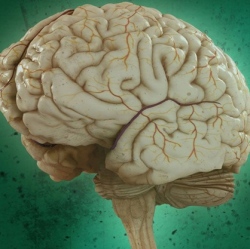
Harvard neuroscientists have made a discovery about myelin that turns 160 years of neuroanatomy on its head. Myelin, the electrical insulating material in the body long known to be essential for the fast transmission of impulses along the axons of nerve cells, is not as ubiquitous as thought, according to new work led by Professor Paola Arlotta.
“Myelin is a relatively recent invention during evolution,” says Arlotta. “It’s thought that myelin allowed the brain to communicate really fast to the far reaches of the body, and that it has endowed the brain with the capacity to compute higher-level functions.”
In fact, loss of myelin is a feature in a number of devastating diseases, including multiple sclerosis and schizophrenia. But the new research shows that despite myelin’s essential roles in the brain, “some of the most evolved, most complex neurons of the nervous system have less myelin than older, more ancestral ones,” said Arlotta, co-director of the HSCI neuroscience program.
She said the higher one looks in the cerebral cortex, closer to the top of the brain, which is its most evolved part, the less myelin one finds. Not only that, but “neurons in this part of the brain display a brand-new way of positioning myelin along their axons that has not been previously seen. They have ‘intermittent myelin’ with long axon tracts that lack myelin interspersed among myelin-rich segments.”
